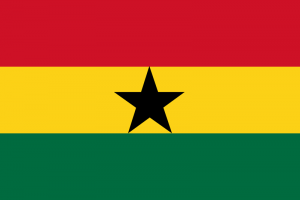Difference between revisions of "Language/Twi/Grammar/Gender"
m (Quick edit) |
m (Quick edit) |
||
| Line 76: | Line 76: | ||
|description=In this lesson, we will learn about the gender rules in Twi. We will look at how to identify the gender of nouns and how to use the correct gender when speaking or writing in Twi. | |description=In this lesson, we will learn about the gender rules in Twi. We will look at how to identify the gender of nouns and how to use the correct gender when speaking or writing in Twi. | ||
}} | }} | ||
==Related Lessons== | |||
* [[Language/Twi/Grammar/Adjectives|Adjectives]] | |||
* [[Language/Twi/Grammar/Plurals|Plurals]] | |||
* [[Language/Twi/Grammar/Questions|Questions]] | |||
* [[Language/Twi/Grammar/Negation|Negation]] | |||
* [[Language/Twi/Grammar/Conditional-Mood|Conditional Mood]] | |||
* [[Language/Twi/Grammar/Future-Tense|Future Tense]] | |||
* [[Language/Twi/Grammar/Nouns|Nouns]] | |||
* [[Language/Twi/Grammar/Pronouns|Pronouns]] | |||
{{Twi-Page-Bottom}} | {{Twi-Page-Bottom}} | ||
Revision as of 21:23, 25 February 2023
Hi Twi learners! 😊
In this lesson, we will learn about the gender rules in Twi. We will look at how to identify the gender of nouns and how to use the correct gender when speaking or writing in Twi.
Gender in Twi
In Twi, nouns are either masculine or feminine. This means that when you use a noun, you must also use the correct gender. For example, if you are talking about a man, you must use the masculine form of the noun. If you are talking about a woman, you must use the feminine form of the noun.
The gender of a noun can usually be identified by looking at the ending of the word. For example, the word for “teacher” is “ɔdɔfo” in the masculine form and “ɔdɔfowaa” in the feminine form. As you can see, the feminine form has an extra “waa” at the end.
Masculine Nouns
Most masculine nouns end in “o” or “a”. Here are some examples:
| Twi | Pronunciation | English Translation |
|---|---|---|
| ɔdɔfo | o-doh-foh | teacher |
| ɔhene | o-hay-nay | king |
| ɔmanfo | o-mahn-foh | man |
| ɔyɛfo | o-yay-foh | doctor |
Feminine Nouns
Most feminine nouns end in “wa” or “ya”. Here are some examples:
| Twi | Pronunciation | English Translation |
|---|---|---|
| ɔdɔfowaa | o-doh-foh-wah | teacher (feminine) |
| ɔhenewaa | o-hay-nay-wah | queen |
| ɔmanfowaa | o-mahn-foh-wah | woman |
| ɔyɛfowaa | o-yay-foh-wah | doctor (feminine) |
Using the Correct Gender
When speaking or writing in Twi, it is important to use the correct gender. For example, if you are talking about a man, you must use the masculine form of the noun. If you are talking about a woman, you must use the feminine form of the noun.
Here are some examples of sentences using the correct gender:
- ɔhene yɛ ɔdɔfo - The king is a teacher.
- ɔmanfowaa yɛ ɔyɛfowaa - The woman is a doctor.
- ɔhene ne ɔmanfowaa yɛn - The king and the woman are here.
Practice
To improve your Twi Grammar, you can also use the Polyglot Club website. Find native speakers and ask them any questions!
Let's practice using the correct gender in Twi. Choose the correct answer for each sentence:
- ɔhene ne ____ yɛn - The king and the ____ are here.
A. ɔmanfowaa B. ɔmanfo
- ____ yɛ ɔdɔfo - The ____ is a teacher.
A. ɔhene B. ɔhenewaa
Answers:
- A. ɔmanfowaa
- A. ɔhene
➡ If you have any questions, please ask them in the comments section below.
➡ Feel free to edit this wiki page if you think it can be improved. 😎
Related Lessons
